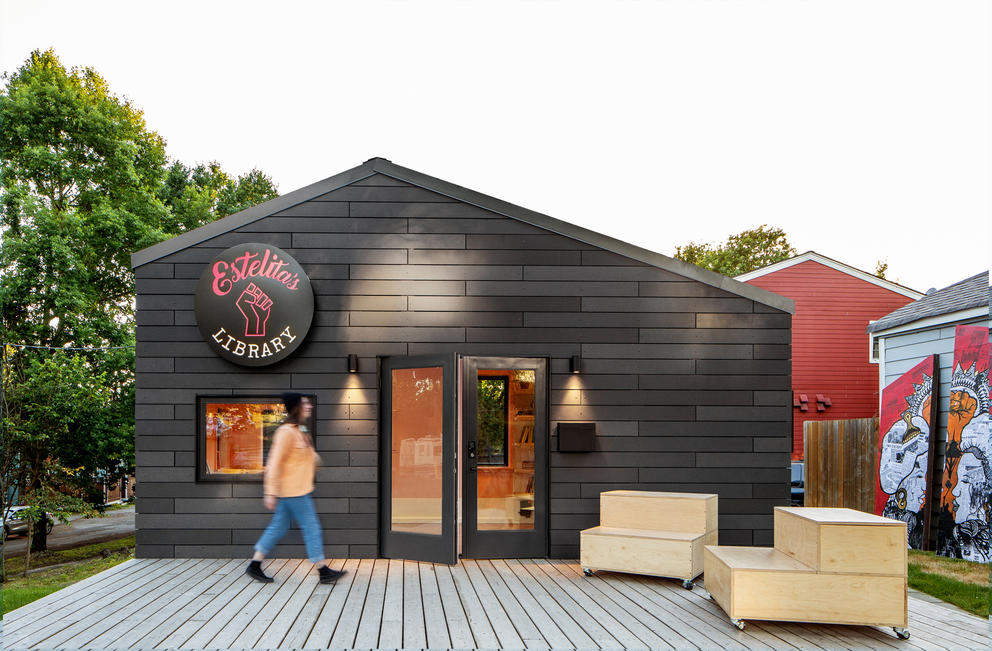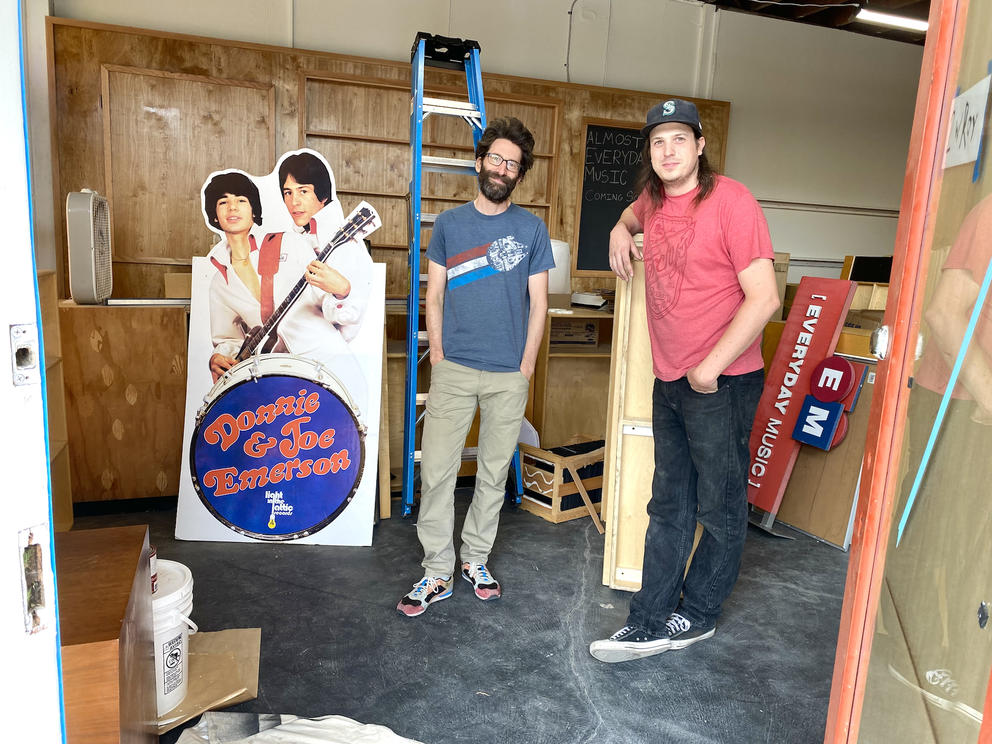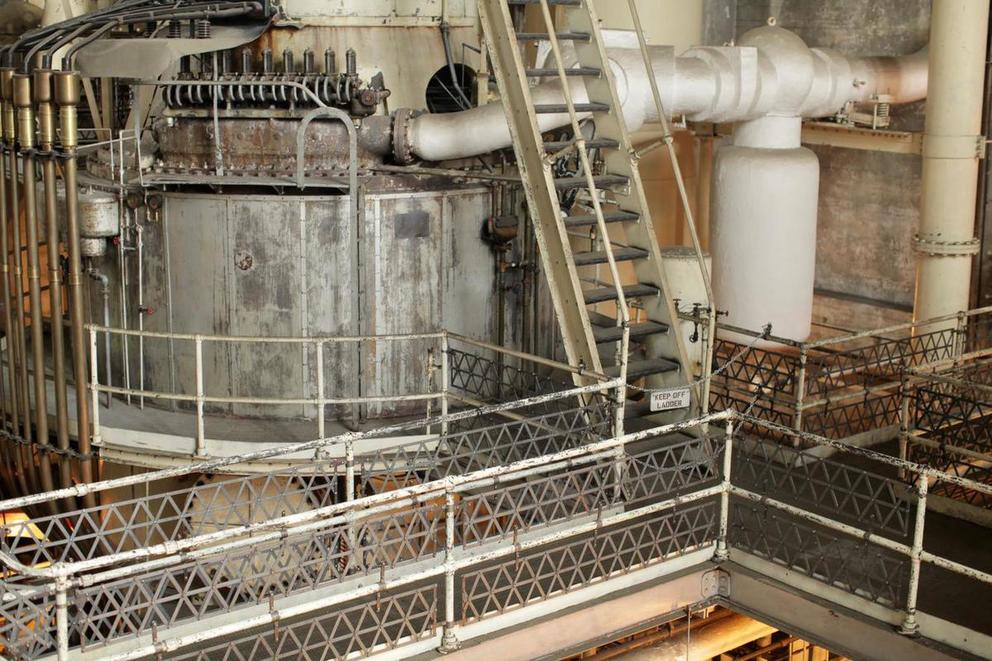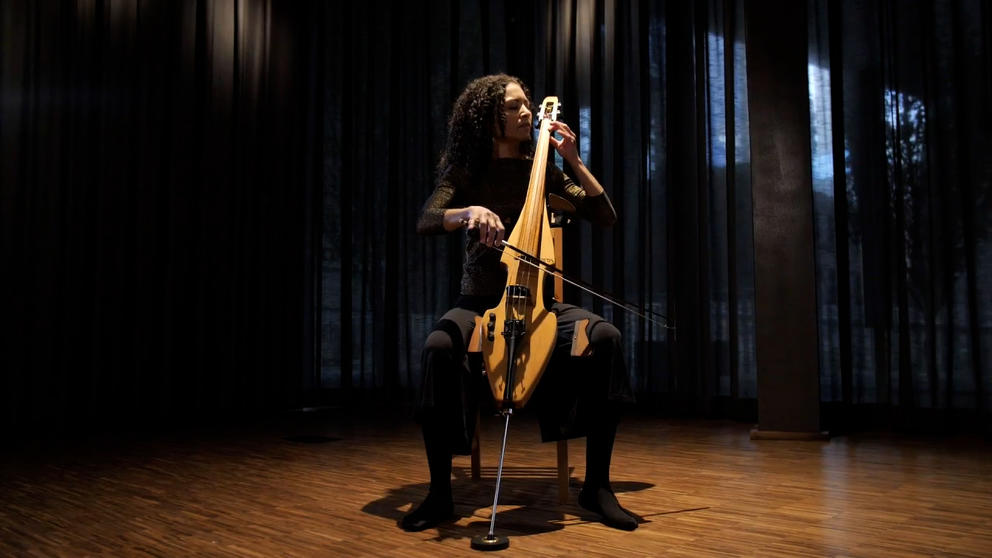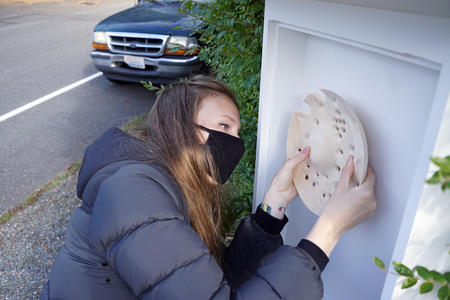This story is part of Crosscut’s 2021 Fall Arts Preview.
Standing at 225 square feet, with a 330-square-foot outdoor deck, the tiniest of all must be the new Central District location of Estelita’s Library. The small footprint of the “Tiny Cultural Space” belies its grand goal of providing and promoting accessibility to literature on justice, ethnic studies and liberation movements.
Estelita’s celebrated its grand opening last month but remains closed to the public because of COVID-19. For now, you can visit its online bookstore or admire the sleek Sawhorse Revolution-built structure from the outside.
Speaking of venerable community spaces that have found a new home, Café Racer, the longtime University District coffee shop and art space, is making its highly anticipated move to Capitol Hill this fall. Ahead of the Sept. 11 opening celebration (featuring performances by “circus/psych-punk project” Velvet Q, hip-hop artist Taylar Elizza Beth and others), the former Barça bar façade has already been painted in Café Racer’s trademark lime-green and black, and a new neon “love” sign is in the works.
Expect Café Racer’s typical blend of no-nonsense comfort food, experimental jazz, open mic nights and other opportunities for up-and-coming musicians. Plus: The OBAMA Room (the Official Bad Art Museum of Art) mezzanine makes a comeback, too.
You win some, you lose some. That turns out to be the case for Capitol Hill, which (while it is getting Café Racer) lost beloved record store Everyday Music earlier this year, after pandemic struggles dealt a final blow to the small, Portland-based chain. But two former employees, KEXP DJ Hans Fluegel and Tyler Mitchell, are planning to keep the music going in an old/new venture (tentatively) named Almost Everyday Music. Update: on September 29, the owners announced that the new name will be Royal Records.
The smaller-scale spin-off shop, which plans to host in-store events and will carry records, compact discs, cassettes, DVDs and VHS tapes, will open this month in a charming old storefront on W. Roy Street in Lower Queen A-, er, “Uptown.”
Despite restrictions on gatherings (and possibly inspired by them?), this past year we’ve seen a trove of new “community spaces” — gathering places that show art, serve drinks, offer workshops and generally don’t like to be pinned down to just one label.
For example, the vegan-bakery-meets-art/music-space-and-social-justice-center Casa del Xolo (short for Xoloitzcuintle, the revered Mexican hairless dog and a Tijuana B.C. soccer team). Biochemist turned philosopher and pastry chef Lara de la Rosa quit her day job to develop this Fremont space, which she plans to open in October.
Capitol Hill has seen several new galleries pop up recently, but AMcE Creative Arts — open since June — goes further by also offering art workshops for kids and adults, talks with artists and arts educators, and partnerships with local nonprofits and art organizations, as well as “Niche Market,” which showcases smaller works and artist books from local and national artists. During a recent meet-and-greet with Denver-based artist Christine Nguyen, whose stellar paper mylar paintings are on view until Oct. 23, visitors were invited to make their own “color flares.”
In Belltown, artists/friends/collaborators Brandon Thomas and Aaron Carr opened the multimedia community art space Blaque Masse Studios to provide a creative space for Black, queer creatives in the city. “There's just not a lot of opportunities for marginalized voices to have access to the resources and the equipment and ... the space they need to grow,” Carr told me during a recent visit.
Entering the thin suite of spaces that make up Blaque Mass felt like stepping inside a polymath artist’s brain. It was hard to know where to look first — at the green screens, plants, plastic flamingo, fainting chair, paint-splattered tarp, art supplies, sewing machine, ladders, easels or bright-pink Hollywood mirror. The space has already functioned as a meeting place and open mic/work-in-progress sharing venue, but Thomas and Carr also plan to institute rotating gallery shows, teach people to do drag and more. [Update: Blaque Masse is currently on hiatus.]
The Chinatown-International District is home to a few new community-and-coffee spaces. Earlier this year, Friends of Little Saigon opened Little Saigon Creative. Housed in the same building as Hello Em Viet Coffee and Bakery, it’s a gathering space where people can lounge, pick up something from the library, check out art exhibits from the in-house gallery “Owning it” and learn more about the neighborhood. When it’s safer to gather, the Friends of Little Saigon plans to reprise its Vietnamese language and culture classes for Vietnamese Americans.
Also new to the neighborhood is Gift Shop, a coffee shop and natural wine store meets local arts and design hub. During the week, you can get your matcha, sake and coffee fix while shopping for records, locally designed clothes, ceramics and other home goods. Gift Shop regularly hosts food or art pop-ups and is also a go-to place for finding local zines and discovering local artists.
Black art, culture and business hub The Liink Project opened this summer in the Central District. During the day The Liink functions as a retail and art space with a gallery of local artists; in evenings and on weekends it becomes an event space for art shows, “paint-and-sip” events, wine tastings, pop-ups, markets and more. Founder Stephanie Morales plans to start coordinating a Central District art walk in the coming months, as well. “The goal is to use this space and connect Black creatives and entrepreneurs to a larger audience and to resources that can elevate their craft,” Morales says.
Further south, on north Beacon Hill, is the still-in-the-works private art studio/home/multidisciplinary art space of artists Demi Raven and Janet Galore. The Grocery Studios recently passed its final inspection from the city of Seattle, after three years of renovations to the one-story building, which was constructed in 1929 as a corner grocery store. The grand opening date is still TBD (Raven and Galore are hoping for early 2022), and the planned pop-up art exhibitions, workshops, lectures, music performances and “other creative activities” will be delta-dependent.
Making headway through a slog of red tape is a plan to transform the 114-year old Georgetown Steam Plant into an innovative arts and science hub. Seattle City Light, which owns the historic steampunk landmark, has signed a long-term lease and operating agreement with the newly formed Georgetown Steam Plant Community Development Authority. The (alphabet-soup alert!) GTSPCDA plans to tackle the $20 million, multiyear restoration in phases, but will start arts programming and tours in the meantime.
Just a stone’s throw away, Mini Mart City Park is inching closer to opening. In 2008, with the motto “cleaning the earth with art,” Seattle art trio SuttonBeresCuller first pitched their Creative Capital award-winning idea to transform a former minimart and gas station (that served as a fuel storage for Boeing during World War II) into a pocket park and community center for gallery shows, movies in the park, potlucks, community meetings, readings and live music space.
After more than a decade of planning, cleaning up the toxic brownfield site the land sits on, delays, red tape and renovations, the space (which features a green roof) is preparing for a soft launch this fall and the official opening in early 2022.
Meanwhile, another group of local creators has transformed a different decrepit building into a bustling arts space. Colton Dixon Winger of styling and interiors agency Cuniform, woodworkers Julianne Johnson, Austin Hicks, Arne Pihl, and designer Charlie Landefeld joined forces earlier this year to renovate an empty South Lake Union warehouse — using recycled materials entirely sourced on site — and transform it into a series of monthly, three-day exhibitions of local art and design (all titled, somewhat confusingly, Series 001).
Although Series 001’s home is not permanent — the 95-year-old warehouse is slated for demolition at the end of this year — and the exhibits are just weekend pop-up parties once every five weeks or so, the group has managed to create an impressive art space. Walking through the weathered warehouse to admire the handmade and vintage furniture, paintings, photos and ceramics by local artists while a DJ spins soul tunes is a reminder that despite all the city’s changes, the DIY artist spirit lives on in Seattle and the talent runs deep.
Local talent is getting another sorely needed creative space: The spacious, window-framed 2+U Studio in downtown Seattle, a new art workshop and rehearsal space in the brand-new (Seattle Art Museum-adjacent) 2+U office building. The studio opened last year — under the auspices of longtime arts nonprofit Shunpike — for movement and music artists from underserved communities, who can apply to use the 1,100-square-foot ground floor space free to create, rehearse and stage performances.
Though the stage element has been dormant because of COVID-19, Shunpike plans to ramp up programming this fall, including public (outdoor) performances — Sept. 14-16, on the plaza between the 20 concrete columns propping up the 38-story building — during the Downtown Seattle Association’s “Welcome Back Weeks.” Some of these performers, like cellist Gretchen Yanover and dancer Willyum LaBeija (who will host a vogue performance workshop), previously rehearsed in The Studio.
Last, but not least in art and square footage, is the $1.15 billion, more-than-17,000-person capacity Climate Pledge Arena, slated to reopen this November after a yearslong redevelopment (that kept the iconic roof in place). Though fans streaming into Seattle Center may mostly have eyes on the Kraken, the stars of the Seattle Storm, or the touring musicians on stage, they will encounter a lot of new art upon exiting and entering the building, in the form of murals in the exit tunnels and a set of seven public artworks by notable Pacific Northwest artists surrounding the arena.
Greeting visitors at the east entrance will be Gerard Tsutakawa’s “SeaWave,” a 7-foot-tall bronze wheel that represents wave movement. Preston Singletary and David Franklin are working on a playful, stained-glass-like sculpture titled “La Diab Pish,” or The Pacific Giant Octopus, which will change colors with the light and the sun.
Longtime Seattle sculptor Norie Sato is prepping a 13-foot abstract mosaic (inspired by Paul Horiuchi’s 1962 “Seattle Mural” at the Mural Amphitheater), to be installed on the south wall. From the heart of a dark, purple sky, a multicolored explosion reaches out toward the mural’s edges, evoking, as Sato puts it, “the idea of bodies in motion, the energy of sports, the beauty of the attraction, and the movement within a city.”
Get the latest in local arts and culture
This weekly newsletter brings arts news and cultural events straight to your inbox.


